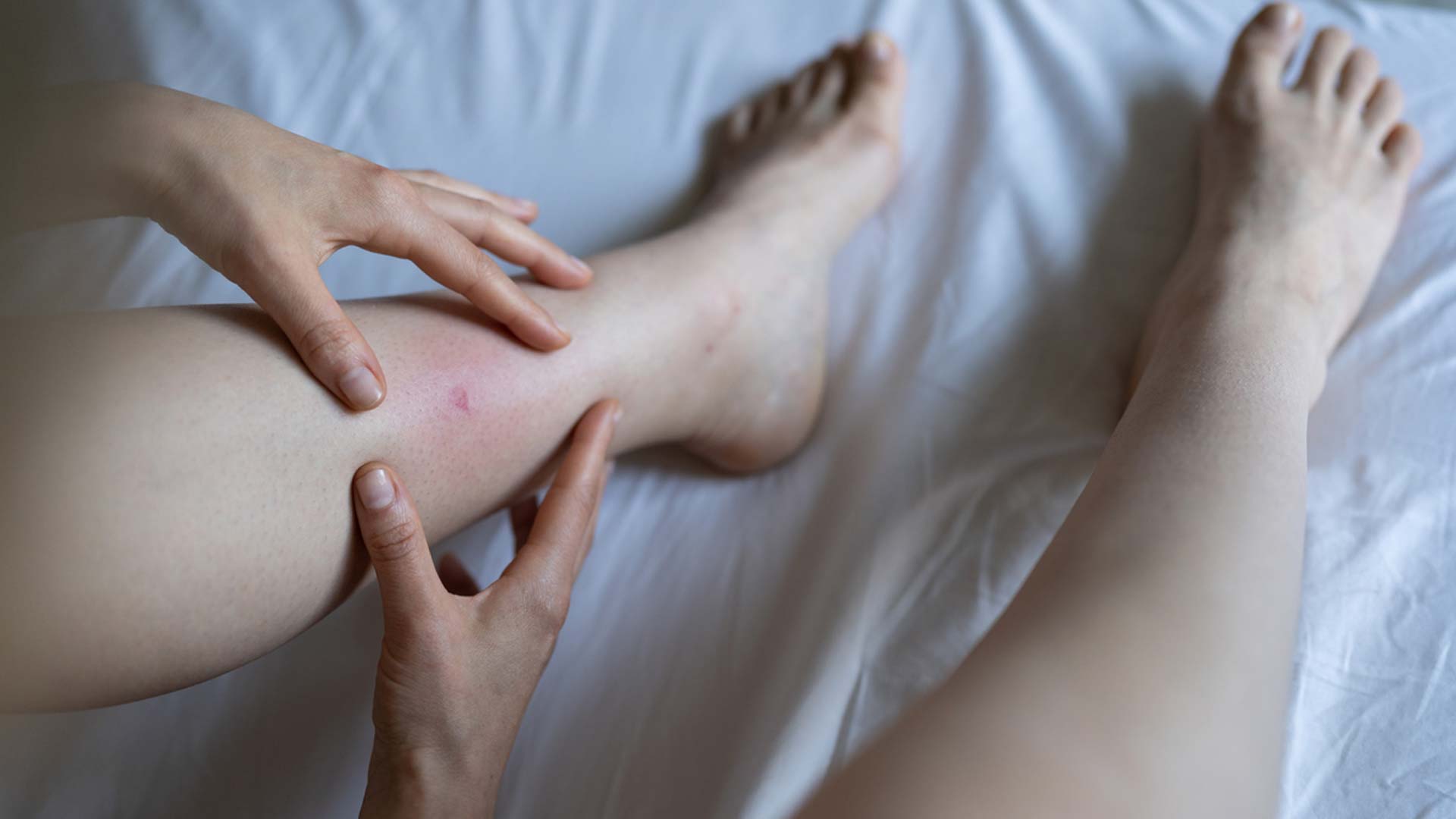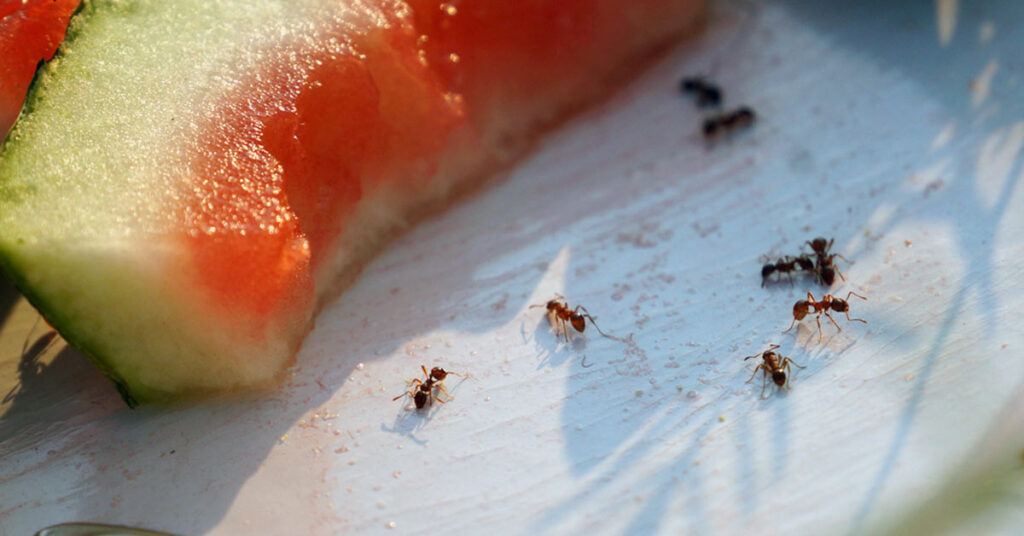Are Bed Bugs Dangerous?
Bed bugs, while not known to transmit diseases, can pose significant risks to human health and well-being. Their bites often result in itchy welts and can lead to secondary skin infections due to scratching. In heavily infested homes, there is a rare risk of anemia, particularly in vulnerable populations like the elderly and young children. Additionally, bed bugs can cause psychological distress, including anxiety, sleeplessness, and even symptoms akin to post-traumatic stress. While they are not a direct health hazard in the traditional sense, the indirect effects of bed bug infestations on mental health and quality of life are substantial and should not be underestimated.

The Hidden Threat in Our Homes: Understanding the Risks of Bed Bugs
In the quiet of our homes, where safety and comfort are expected, an unassuming yet pervasive threat lurks – bed bugs. These tiny, nocturnal pests, known for their stealthy existence and notorious resilience, have resurged in American homes, apartments, and even public spaces. This resurgence poses a critical question to homeowners and renters alike: Are bed bugs merely a nuisance, or do they represent a more significant danger to our health and well-being?
The story of bed bugs is not new. These creatures have coexisted with humans for millennia, thriving in our most intimate spaces – our bedrooms. Historically, bed bugs were common in American homes until the mid-20th century when advances in pest control nearly wiped them out. However, in the late 1990s, these pests began to reappear, showing an alarming adaptability to previously effective pesticides and spreading rapidly in urban environments.
This resurgence has sparked concern and curiosity. Bed bugs, while small in size – an adult is about the size of an apple seed – can have a disproportionately large impact on our lives. They are expert hitchhikers, traveling effortlessly on luggage, clothing, and furniture, making no home immune to their reach. Their ability to hide in the smallest of crevices allows them to go undetected for long periods, often until their populations have grown significantly.
The primary concern with bed bugs has traditionally been their bites, which occur mostly at night when their human hosts are asleep. These bites can lead to a range of skin reactions, from minor redness and itching to severe allergic responses. However, the impact of bed bugs extends far beyond the physical marks they leave. The psychological toll of an infestation – the anxiety, stress, and disruption to one’s sense of security – can be profound.
Moreover, the societal and economic implications of bed bug infestations are far-reaching. The cost of extermination and the replacement of infested items can be burdensome for individuals and families. Public facilities, including hotels, schools, and hospitals, are not immune, and their closures due to infestations have broader implications for community health and well-being.
As we delve deeper into the world of these elusive pests, it becomes clear that the question of their danger is multifaceted, touching on aspects of physical health, mental well-being, and societal impact. This article aims to explore these dimensions, offering a comprehensive understanding of the risks posed by bed bugs and the measures we can take to protect our homes and communities.
The Nature of the Threat: A Closer Look at Bed Bugs
The resurgence of bed bugs in American homes has raised alarms, prompting a deeper understanding of these pests and the threat they pose. These small, reddish-brown insects, known scientifically as Cimex lectularius, have coexisted with humans for centuries, thriving in our most intimate spaces. Their comeback, particularly in urban environments, underscores a need to reassess their impact on our daily lives.
Bed bugs are primarily nocturnal, feeding on human blood while their hosts are asleep. An adult bed bug is about the size of an apple seed, making them just noticeable enough to be identified by the naked eye. They are adept at hiding in tiny crevices, including mattress seams, bed frames, and even behind wallpapers, emerging primarily at night to feed.
Their feeding process is both sophisticated and stealthy. Bed bugs use two hollow tubes to pierce the skin: one to inject an anticoagulant and anesthetic to facilitate feeding and the other to withdraw blood. This process is usually painless, with the itchiness and welts associated with their bites appearing much later, often leading to delayed awareness of their presence.
The reproductive rate of bed bugs is another factor contributing to their threat. A single female can lay hundreds of eggs in her lifetime, and under optimal conditions, a bed bug can develop from egg to adult in just about a month. This rapid life cycle, coupled with their ability to hitchhike on luggage, clothing, and furniture, makes them formidable invaders that can quickly establish and spread within new environments.
Bed bugs are notoriously difficult to eradicate due to their resilience. They can survive for months without feeding, allowing them to persist even in unoccupied spaces. Additionally, over the years, bed bugs have developed resistance to various pesticides, rendering some traditional methods of extermination less effective. This resistance has necessitated the development of more sophisticated and integrated pest management strategies.
While bed bugs are not specifically seasonal pests, their activity and spread can be influenced by human behavior and environmental conditions. Increases in travel, urbanization, and the exchange of second-hand furniture are among the factors contributing to their spread. Additionally, the dense living conditions in urban areas facilitate the rapid spread of infestations from one unit to another.
Understanding the nature of the bed bug threat is crucial in developing effective strategies to combat them. Their biological and behavioral traits, combined with their resilience and ability to spread rapidly, make them a persistent issue in homes. Awareness and education about bed bug habits, early detection, and integrated pest management are key to controlling and preventing infestations, ensuring the safety and comfort of our living spaces.
Bed Bugs At A Glance
What Are Bed Bugs?
- Small, reddish-brown insects that feed exclusively on blood.
- Not known to transmit diseases.
- Can live several months without a meal.
Identifying Bed Bugs
- Size and shape of an apple seed.
- Hide in mattresses, bed frames, and even behind wallpapers.
- Active mainly at night.
Signs of Infestation
- Small blood stains on bedding.
- Dark or rusty spots of bed bug excrement on sheets and mattresses.
- An offensive, musty odor from the bugs’ scent glands.
Psychological Impact and Secondary Health Risks
The resurgence of bed bugs in residential spaces has brought not only physical discomfort but also profound psychological and secondary health impacts that merit closer examination.
The psychological toll of bed bug infestations is often underestimated. Homeowners grappling with infestations report a spectrum of emotional responses, including anxiety, embarrassment, and a pervasive sense of unease. The knowledge that one’s living space is shared with parasites can disrupt sleep patterns, leading to insomnia and heightened stress levels. This constant state of vigilance and discomfort can, over time, erode mental well-being, sometimes manifesting symptoms akin to post-traumatic stress disorder (PTSD). The stigma associated with bed bugs further exacerbates this distress, as individuals may feel isolated or judged due to the common misconception that infestations are linked to poor hygiene or housekeeping.
Beyond the psychological impact, bed bugs pose several secondary health risks. The most immediate of these is the skin reaction to bites. While some individuals may have no visible reaction, others develop itchy welts or rashes. The urge to scratch these bites can lead to skin abrasions and, in worse cases, secondary infections. The risk of infection is particularly concerning for individuals with compromised immune systems or those who may not have immediate access to medical care.
In rare instances, prolonged and severe infestations have been linked to anemia, especially in vulnerable populations like the elderly and young children. This occurs when the volume of blood loss to bed bug feeding becomes significant, though such cases are relatively uncommon.
The potential for bed bugs to trigger asthma and allergic reactions is an area of ongoing research. Like other household pests, bed bugs can produce allergens that may exacerbate asthma symptoms in sensitive individuals. However, the extent of this risk and the direct correlation to bed bugs specifically is still being explored by the scientific community.
Compounding these risks is the burden of misconceptions surrounding bed bugs. The myth that bed bugs are a result of uncleanliness can lead to misplaced shame and delay in seeking help. This delay not only prolongs the psychological distress but also allows the infestation to grow, increasing the risk of physical and mental health impacts.
The psychological impact and secondary health risks associated with bed bug infestations are multifaceted and significant. They extend beyond the immediate discomfort of bites, affecting mental health, social relationships, and overall quality of life. Understanding and addressing these impacts is crucial in managing bed bug infestations effectively and compassionately. As we continue to confront this challenge, a holistic approach that considers both the physical and psychological ramifications is essential for the well-being of affected individuals.

Health Risks At A Glance
Physical Health Risks
- Bites cause itchy welts; severity of reaction varies.
- Potential for secondary skin infections due to scratching.
- Rare cases of anemia in severe infestations.
Mental Health Risks
- Stress and anxiety due to persistent infestations.
- Sleep disturbances and insomnia.
- Feelings of embarrassment and social stigma.
Allergic Reactions
- Some individuals may develop allergic reactions.
- Asthma exacerbation in rare cases.
Comparing the Psychological and Secondary Health Impacts of Bed Bugs
| Aspect | Description | Potential Effects | Management Strategies |
|---|---|---|---|
| Psychological Impact | Emotional distress caused by the presence of bed bugs in living spaces. | – Anxiety and stress – Sleep disturbances – Symptoms akin to PTSD – Social stigma and isolation |
– Seek mental health support if needed – Educate oneself and others to combat stigma – Regular communication with pest control professionals |
| Skin Reactions to Bites | Physical reaction to bed bug bites, varying from no visible signs to itchy welts or rashes. | – Itchiness and discomfort – Potential for skin infections from scratching |
– Use antihistamines or topical creams for relief – Maintain hygiene to prevent infections – Consult a healthcare provider for severe reactions |
| Secondary Infections | Infections that may occur from scratching bite marks. | – Bacterial skin infections – Increased risk for individuals with compromised immune systems |
– Avoid scratching bites – Use antiseptic creams on affected areas – Seek medical attention for signs of infection |
| Risk of Anemia | Rare cases of anemia due to significant blood loss from heavy infestations. | – Fatigue – Weakness – Higher risk in the elderly and young children |
– Monitor for symptoms of anemia in severe infestations – Consult a healthcare provider for diagnosis and treatment |
| Asthma and Allergies | Potential exacerbation of asthma and allergies due to bed bug allergens. | – Respiratory issues – Allergic reactions |
– Maintain clean living environments – Use air purifiers – Consult healthcare providers for asthma or allergy management |
| Misconceptions and Stigma | Misunderstandings about bed bugs leading to social stigma. | – Delay in seeking help – Social embarrassment – Isolation |
– Public education campaigns – Open discussions to dispel myths – Support from community and social services |
-
Best OverallSave $50 on your first recurring service today with code GET50
-
Best for TermitesSave $50 on pest control services with code SAVE50 at checkout
-
Best for Bed BugsGet a free estimate on pest control services for your home
-
Best for Wildlife RemovalCall For A Fast & FREE Phone Estimate Today
-
Best for Natural TreatmentGet $100 Off Your Termite Treatment Service
Economic and Social Consequences of Bed Bug Infestations
The resurgence of bed bugs in homes and public spaces has not only raised health concerns but also brought to light significant economic and social consequences. These impacts, often overlooked, reveal the broader implications of bed bug infestations on communities and individuals.
The direct costs associated with bed bug infestations are substantial. Homeowners and property managers often face hefty expenses in professional extermination services. Unlike other pests, bed bugs require specialized treatment methods, which can be costly and may need multiple sessions to be effective. Additionally, the cost of replacing infested furniture, bedding, and clothing can add up quickly, placing a financial strain on affected individuals.
For businesses, particularly those in the hospitality industry, the economic impact can be even more severe. Hotels, hostels, and rental properties face not only the direct costs of eradication but also significant revenue losses due to room closures and damaged reputation. A single report of bed bugs can lead to a decrease in bookings and long-term brand damage, affecting profitability.
Beyond the direct expenses, bed bug infestations carry indirect economic and social costs. In workplaces, infestations can lead to decreased productivity as employees deal with the stress and distractions of a bed bug problem at home. In severe cases, employees may even need to take time off work to manage the infestation, further impacting economic productivity.
In educational settings, bed bug infestations can disrupt learning environments. Schools and dormitories may require closures for treatment, affecting the education and routine of students. The social stigma associated with bed bugs can also lead to bullying and social isolation for affected students.
The healthcare sector is not immune to the consequences of bed bugs. Hospitals, clinics, and nursing homes must balance the need for patient care with the risk of spreading infestations. In some cases, facilities have refused treatment to patients from bed bug-infested homes, raising ethical and public health concerns. The closure or limited access to healthcare facilities due to bed bugs exacerbates the strain on already burdened healthcare systems.
The social stigma attached to bed bugs can lead to isolation and shame for those affected. This stigma often stems from the misconception that bed bugs are a result of poor hygiene or housekeeping, which is not the case. The psychological impact, including anxiety, stress, and sleep disturbances, can be profound, affecting the mental health and well-being of individuals.
The economic and social consequences of bed bug infestations extend far beyond the immediate discomfort of bites. They encompass substantial financial costs, disruptions to businesses and public services, and significant mental health impacts. Understanding and addressing these broader implications is crucial in developing comprehensive strategies to manage and mitigate the effects of bed bug infestations in our communities.
Economic and Social Impact At A Glance
Homeowners
- Cost of professional extermination services.
- Expense of replacing infested furniture and belongings.
Public Spaces
- Temporary closures of infested facilities like hotels, shelters, and public buildings.
- Economic loss due to closure and treatment costs.
Stigma and Social Issues
- Misconceptions leading to social stigma.
- Impact on mental well-being and community relations.
Combating the Bed Bug Threat
Effectively combating bed bugs requires a multifaceted approach that goes beyond conventional pesticide use. Integrated Pest Management (IPM) is the cornerstone of this strategy, combining physical, chemical, and preventive measures. Physical methods include thorough vacuuming of infested areas, steaming mattresses and furniture, and using bed bug-proof mattress encasements to trap and starve the bugs. Chemical treatments, while necessary, should be approached with caution. Professional exterminators can apply insecticides more safely and effectively than homeowners. These experts often use a combination of products, including desiccants that dehydrate bed bugs and insect growth regulators that disrupt their life cycle.
Preventive measures are equally crucial in the battle against bed bugs. Regular inspections of bedrooms and living areas can help catch infestations early. Homeowners should be particularly vigilant when acquiring second-hand furniture, a common vector for bed bug introductions. Travelers are advised to inspect hotel rooms for signs of bed bugs and keep luggage off the floor to avoid bringing these pests home. Education plays a vital role in prevention; understanding bed bug behavior, signs of infestation, and effective treatment options empowers homeowners to act swiftly and decisively.
Combating bed bugs is a proactive and ongoing process. It involves a combination of professional pest control services, diligent housekeeping, and informed preventive practices. By staying vigilant and responding promptly to signs of infestation, homeowners can protect their living spaces from the disruptive and distressing effects of bed bugs.
-
Best OverallSave $50 on your first recurring service today with code GET50
-
Best for TermitesSave $50 on pest control services with code SAVE50 at checkout
-
Best for Bed BugsGet a free estimate on pest control services for your home
-
Best for Wildlife RemovalCall For A Fast & FREE Phone Estimate Today
-
Best for Natural TreatmentGet $100 Off Your Termite Treatment Service
Prevention and Vigilance
Preventing bed bug infestations requires a multifaceted approach, combining vigilance, regular inspection, and cautious behavior, especially when acquiring second-hand items or traveling. Homeowners should regularly inspect their sleeping areas, paying close attention to the seams of mattresses, bed frames, and box springs, as these are common hiding spots for bed bugs. Small, reddish-brown stains on bedding or mattresses can be telltale signs of their presence. Additionally, inspecting second-hand furniture or clothing before bringing them into the home is crucial. Bed bugs can easily hitchhike on these items, leading to unintended infestations.
Traveling also poses a significant risk for bringing bed bugs into the home. When staying in hotels or guest houses, travelers should inspect the bed, including the mattress, headboard, and luggage stands. Keeping luggage on a stand rather than the floor and avoiding storing clothes in hotel drawers can reduce the risk of bed bugs latching onto personal items. Upon returning home, it’s advisable to wash all travel clothing in hot water and to vacuum suitcases before storing them away. These proactive measures, while simple, can be highly effective in preventing bed bug infestations, safeguarding the home from these unwelcome invaders.
Prevention and Control
Prevention Tips
- Regularly inspect beds and sleeping areas.
- Be cautious with second-hand furniture.
- Use protective covers on mattresses and pillows.
Travel Tips
- Inspect hotel rooms, especially beds and furniture.
- Keep luggage on racks away from the bed.
- Avoid placing clothes in hotel drawers.
Control Measures
- Contact a professional pest control service.
- Avoid DIY treatments like bug bombs.
- Follow integrated pest management strategies.
Navigating the Bed Bug Challenge in Modern Homes
The resurgence of bed bugs in our homes is more than a mere inconvenience; it’s a multifaceted challenge impacting mental well-being, economic stability, and our sense of security in our most private spaces. While these pests do not directly transmit diseases, their presence and the efforts to eradicate them can have far-reaching consequences.
The psychological impact of bed bugs is profound. The constant anxiety of being bitten, the stigma associated with infestations, and the disruption of sleep patterns can lead to long-term mental health issues. Homeowners often report feelings of helplessness and distress, mirroring symptoms of anxiety and depression. This emotional toll underscores the need for not only effective pest control solutions but also for supportive resources to help affected individuals cope with the psychological aftermath.
The financial burden of dealing with bed bugs is another critical aspect. The cost of professional extermination services, coupled with the potential need to discard and replace infested furniture and belongings, can be substantial. For landlords and business owners, the stakes are even higher, as infestations can lead to loss of tenants, legal liabilities, and damage to reputation. This economic strain highlights the importance of preventive measures and early intervention in managing bed bug problems.
Bed bugs do not discriminate, affecting homes across all socioeconomic levels. However, the impact is often more severe in densely populated urban areas and communities with limited resources. In such settings, the spread of infestations can be rapid and more challenging to control, leading to broader social implications. Public awareness campaigns, community support programs, and access to affordable pest control services are crucial in these communities to prevent widespread outbreaks.
Prevention remains the most effective strategy against bed bugs. Regular inspections, cautiousness with second-hand items, and vigilance during travel are key preventive measures. Educating homeowners about early detection signs and effective treatment options is essential. Public health authorities, pest control professionals, and community organizations play a vital role in disseminating this knowledge.
Addressing the bed bug challenge requires a collaborative approach involving homeowners, pest management professionals, public health officials, and policymakers. Developing and implementing guidelines for prevention, early detection, and safe, effective treatment methods are imperative. Additionally, fostering a supportive environment for those dealing with infestations can help mitigate the psychological and social impacts.
While bed bugs do not pose a direct threat in terms of disease transmission, their impact on mental health, quality of life, and economic stability is significant. Homeowners must remain informed and proactive in preventing and addressing infestations. As these pests continue to challenge our notion of safety within our homes, a combined effort of awareness, prevention, and effective treatment remains our best defense.
Case Studies and Anecdotes
The resurgence of bed bugs in modern living spaces has led to a series of noteworthy cases and personal stories that highlight the diverse impacts of these pests. These anecdotes and case studies offer a deeper insight into the challenges posed by bed bugs, extending beyond mere physical discomfort to encompass broader social and psychological effects.
Fire Station Closure in Salt Lake City
In Salt Lake City, a major fire station faced an unprecedented challenge when its staff started experiencing bed bug bites. The infestation was so severe that it necessitated the temporary closure of the station for extensive treatment. This incident not only disrupted emergency services but also highlighted the ease with which bed bugs can infiltrate public spaces, posing risks to public health and safety.
Homeless Shelter Crisis in Franklin County
A more distressing scenario unfolded in Franklin County, where a homeless shelter was forced to close for four weeks due to a rampant bed bug infestation. This closure had dire consequences, as it pushed already vulnerable residents back onto the streets, exacerbating their hardships. The incident underscored the social and ethical dimensions of pest control, especially in facilities catering to at-risk populations.
Healthcare Facilities Under Threat
Healthcare facilities have not been immune to this pestilence. In Aurora, Colorado, a woman was denied medical treatment because her home was infested with bed bugs, raising concerns about the stigma and isolation faced by affected individuals. In another case, a New York medical facility temporarily shut down an entire treatment floor based on a single sighting of a bed bug. These responses, while precautionary, reflect the deep-seated anxiety and operational challenges bed bugs introduce into healthcare environments.
Personal Narratives
Beyond these public incidents, personal stories from homeowners paint a vivid picture of the bed bug menace. One homeowner shared the ordeal of discovering bed bugs in her child’s crib, leading to months of anxiety, extensive cleaning, and financial strain due to replacing furniture and multiple pest control treatments. Another recounted the stigma and social isolation they faced, as friends and family became wary of visiting their home, fearing the spread of the infestation.
Economic and Emotional Toll
The economic impact is often accompanied by a significant emotional toll. Many homeowners report feelings of violation and persistent anxiety, with the fear of re-infestation lingering long after the bed bugs have been eradicated. The psychological impact can be profound, with some individuals exhibiting symptoms akin to post-traumatic stress, particularly after enduring multiple or severe infestations.
These case studies and personal anecdotes reveal the multifaceted impact of bed bug infestations. They are not just a matter of physical discomfort but can lead to significant psychological distress, social stigma, and economic hardship. These stories underscore the importance of proactive measures, early detection, and effective, responsible pest management strategies in the ongoing battle against bed bugs.
FAQs
Can bed bugs transmit diseases to humans?
No, bed bugs are not known to transmit diseases to humans. Their bites, however, can cause discomfort and itching.
What are the health risks associated with bed bug bites?
Most commonly, bed bug bites result in itchy welts. Some individuals may experience allergic reactions, and excessive scratching can lead to secondary skin infections. In rare cases, severe infestations can cause anemia, especially in vulnerable populations like the elderly and young children.
Do bed bugs cause psychological effects?
Yes, the presence of bed bugs can lead to psychological effects such as anxiety, stress, sleeplessness, and even symptoms similar to post-traumatic stress disorder in severe cases.
Are there any respiratory risks associated with bed bugs?
While direct links are still being studied, there is some concern that bed bugs could contribute to asthma and allergic reactions due to the allergens they produce.
How can I tell if I have a bed bug infestation?
Signs of an infestation include small, itchy bites on the skin, blood spots on bedding, and the presence of tiny, reddish-brown bugs, especially around mattress seams and furniture.
What should I do if I suspect a bed bug infestation in my home?
Contact a professional pest control service for an assessment. Avoid using over-the-counter foggers or “bug bombs,” as these can be ineffective and potentially harmful.
Can bed bugs live in any environment?
Bed bugs are not limited to any specific environment as long as they have access to a blood meal. They are commonly found in homes, hotels, shelters, and even public transportation.
How can I prevent bringing bed bugs into my home?
Be cautious with second-hand furniture and luggage, inspect hotel rooms when traveling, and regularly check your living spaces for signs of bed bugs.
Are bed bugs visible to the naked eye?
Yes, adult bed bugs are visible. They are about the size of an apple seed and reddish-brown in color.
Can bed bug infestations impact property value?
Yes, bed bug infestations can negatively impact the value of a property and lead to significant costs in eradication and replacing infested items.









